
Lot 178
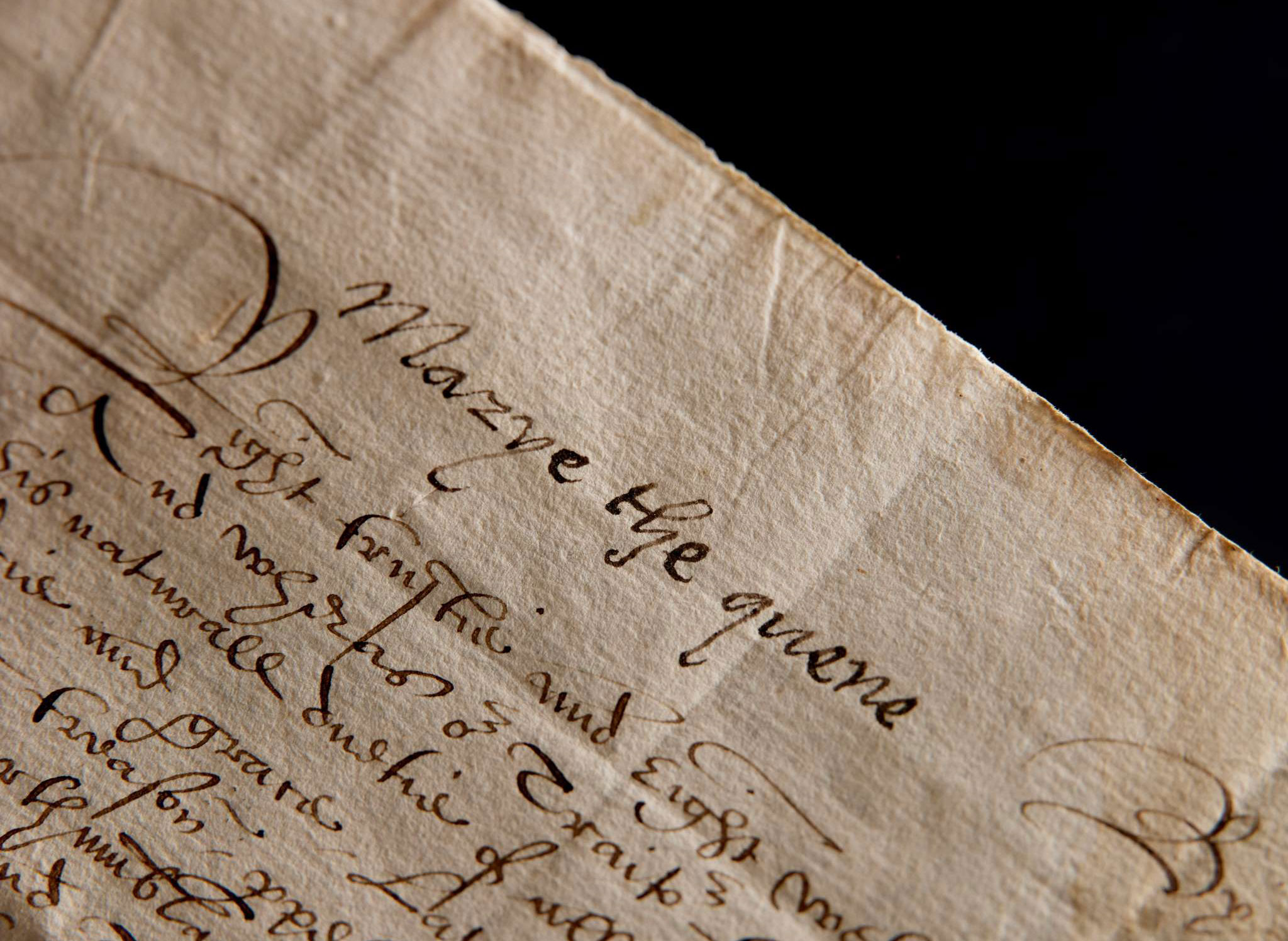
Mary I (1516-1558), Queen of England and Ireland
Letter signed 'Mary the quene' to William, Lord Paget, on the outbreak of Wyatt's Rebellion, 28th January 1554
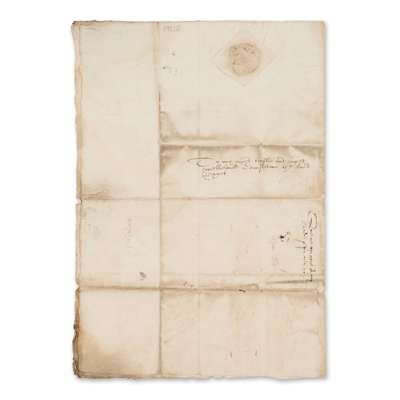
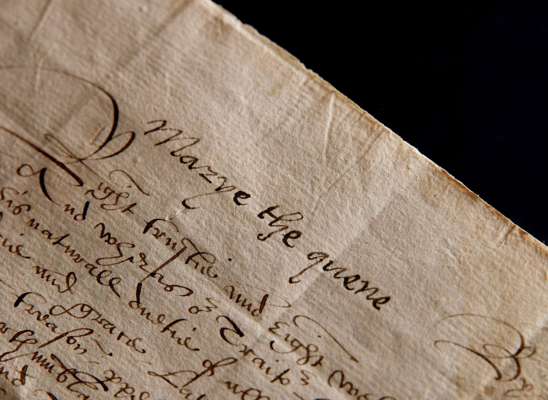
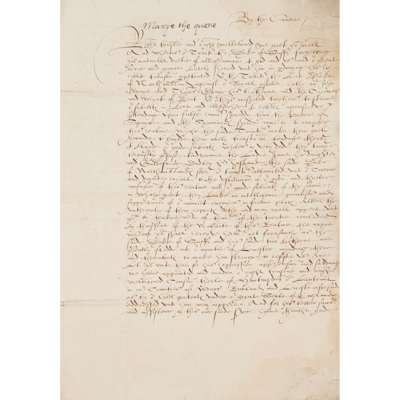
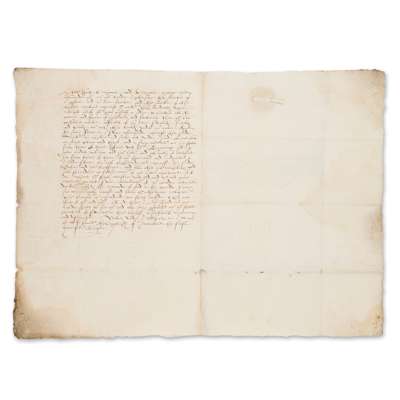



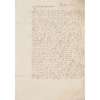
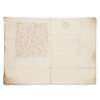
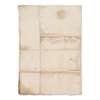
Auction: 05 February 2025 from 10:00 GMT
Description
Single bifolium (31.5 x 21.6cm), written on two sides in a neat and legible secretary hand, Mary's autograph signature at head, the body of the letter comprising in total some 650 words, conjugate leaf addressed in the same secretary hand ‘To our right trustie and right wellbeloved counsellour the lord Paget', contemporary manuscript endorsement and wafer seal, light damp-staining, a few small holes along folds
Footnote
With her regime and the fate of Catholic England in the balance, Mary issues her principal secular councillor with a decisive call to arms, setting out in vivid detail the identities and whereabouts of her enemies, her proposed military response, and her personal interpretation of the state of her realm, now facing its first existential threat:
‘And whereas our traitor the Duke of Suffolk forgetting his naturall dutie of allegiaunce to god and us and our great mercie and grace lately shewed unto him in pardonying his horrible treatson perpetrated with the traitor the late Duke of Northumberland against our Royall personne, hath with John Graye and Thomas Graye his bretherne and the Carewes and Wyat of Kent with others conspired togithere to stirre our subjects in Kent and elsewhere to rebell against us pretending upon false rumors spredd that the prince of Spayne and the Spaniards shulde come in to conquer this realme, whiche the saide traitors make their onely grounde to buylde their onely treason on, tending thereby to blynde our good subjects while in very dede they trayterousely propose tadvaunce the Ladie Jane his daughter and Guldeford Dudley her husband, the saide Duke of Northumberlands son’.
Wyatt’s rebellion was intended by its leaders, members of parliament alarmed by Mary’s imminent marriage to Prince Philip of Spain, as a series of four coordinated uprisings to take place in Devon, Herefordshire, Leicestershire, and Kent. The first of these, led by Sir Peter Carew, failed when the conspirators were discovered and fled, while the second never materialised; the Duke of Suffolk, father of Lady Jane Grey, attracted only a small number of followers in Leicestershire, leaving Sir Thomas Wyatt in Kent as the only conspirator with any chance of success, having gathered a force of some 3,000 men. Mary commands Paget to mobilise ‘all the power and force of horsemen and footemen that yow can possiblie make as well of your owne servants & frends & tenants as all other tenants under your rule’, and to place himself at the disposal of the Earl of Huntingdon in order to apprehend the Duke of Suffolk and his supporters.
This letter is evidence that Mary took the threat of Wyatt’s rebellion extremely seriously, but was perhaps less successful in reflecting on its possible causes. Her assertion that the rebellion was sparked purely by a fear of foreign invasion, and her closing appeal to Paget to do his duty by the ‘true Catholique religion’, together imply a misunderstanding of the changes in the political and religious opinions of her subjects brought about by the Reformation, and the extent to which the two might be interlinked, so that the spectre of Spanish influence might be readily conflated with that of Catholic revanchism, regardless of the protections of Mary’s legal rights as queen secured by the marriage treaty which Paget and his colleagues had designed.
Paget responded to Mary’s call to arms exactly as she wished, appearing ‘on horseback in arms at the muster in St James’ Field, and later bringing Wyatt as a prisoner to court’ (ODNB), though never fully secured her trust, alienating her with his recommendation of clemency for some of the rebel leaders, and proceeding to adopt an apparently obstructive stance to her religious programme. One of the great survivors of the Tudor era, he nonetheless outlived Mary and survived well into the reign of Elizabeth, dying an old man in 1563 after a gradual decline in health.
A similar letter, written to Paget by the Duke of Somerset in the name of the boy-king Edward VI and requesting a unit of cavalry for the 1547 invasion of Scotland, was sold by Lyon & Turnbull on 19th September 2024 (lot 193), illustrating Paget's central role in the governments of successive Tudor monarchs, battling to secure the stability of their dynasty.









